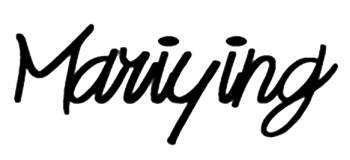How Do I Choose the Right Paper for the Pages?
Choosing the right paper is essential for creating a DIY notebook that meets your functional and aesthetic goals. This guide will help you make informed choices on size, thickness, and specialty types based on common notebook purposes.
1. Choosing the Right Paper Size
Selecting the right size impacts both the notebook's usability and portability. Here’s an expanded list, including options favored in both the U.S. and Europe:
- A5 (5.8 x 8.3 inches): A compact, versatile choice for personal notebooks, especially journals or planners.
- A4 (8.3 x 11.7 inches): Standard in Europe and ideal for a full-page format, such as detailed sketchbooks, writing journals, or work planners.
- A6 (4.1 x 5.8 inches): Perfect for pocket-sized notebooks, allowing easy access on the go.
- B5 (6.9 x 9.8 inches): A popular mid-size format that provides more room than A5 while remaining portable; great for art journals and planners.
- Letter (8.5 x 11 inches): Commonly used in the U.S., this size is a go-to for professional notebooks, bullet journals, and school or work-related uses.
- Legal (8.5 x 14 inches): Also widely used in the U.S., particularly for work notebooks or documents requiring ample space per page.
Choose the size that aligns best with your project and day-to-day needs. For instance, using Loose Leaf Paper in an A5 or Letter size allows flexibility if you want to add, reorder, or remove pages.
2. Considering Paper Thickness
The weight and thickness of paper, measured in GSM (grams per square meter), affect its functionality and feel. Here are a few standard options based on common notebook purposes:
- 70-90 GSM: Comparable to printer paper, this lightweight option is ideal for general writing but may allow ink to bleed.
- 100-120 GSM: Slightly thicker, suited for smooth writing with fountain pens, fineliners, or ballpoints, and offers better durability.
- 150-200 GSM: Thicker and more durable, suitable for sketching, light mixed media, and inks.
- 200+ GSM: Heavy-duty paper, almost like cardstock, recommended for scrapbooking, heavy markers, or multimedia uses.
Opting for Decorative Paper of 100-120 GSM adds a touch of elegance without compromising usability, making it ideal for divider pages or accents.
3. Exploring Specialty Paper Types
Specialty papers introduce unique textures and enhance functionality. Here’s a breakdown of popular options:
- Uncoated Paper: A smooth, ink-absorbent surface, making it ideal for writing journals.
- Recycled Paper: An eco-friendly, slightly textured choice that adds character to any project.
- Decorative Paper: Available in various textures and designs, this is perfect for embellishing covers or divider pages, adding a unique flair.
- Loose Leaf Paper: Adds versatility, enabling you to adjust, rearrange, or expand your notebook pages as needed.
Consider using Decorative Paper for title pages or Loose Leaf Paper for flexible, interchangeable sections.
4. Matching Paper to Your Notebook’s Purpose
Here’s how to select paper type based on your notebook’s intended use:
- Daily Journaling or Writing: Choose smooth, uncoated paper in the 100-120 GSM range to prevent ink bleed while offering a comfortable writing surface.
- Art Journals and Sketchbooks: Go for thicker, durable paper around 150-200+ GSM, which can handle pencils, inks, and light water-based media.
- Planners and Organizers: Lightweight, flexible paper around 90-100 GSM keeps the notebook easy to handle and carry, especially useful with Loose Leaf Binders for easy reordering.
- Scrapbooking or Memory Books: Consider decorative or recycled paper with high GSM (150+) for a sturdy foundation that can support glue, stickers, and photos.
- Travel Journals: Opt for A6 or A5 uncoated paper around 100 GSM to balance portability and functionality.
Testing a variety of options is a great way to ensure the paper you choose aligns with the notebook's purpose and your preferred writing or drawing tools.
By paying attention to paper size, thickness, and specialty types, you can create a notebook that not only serves its purpose but also reflects your personal style. Happy crafting!
